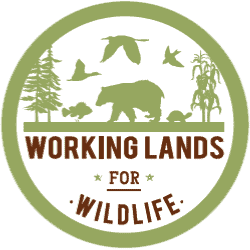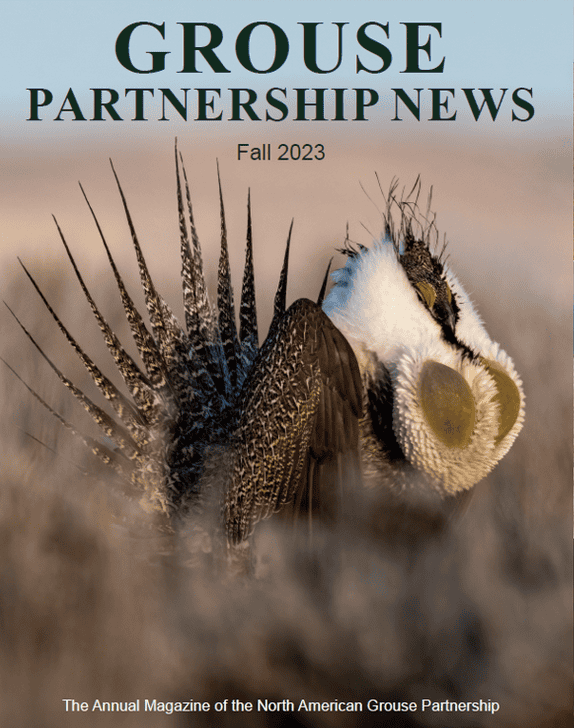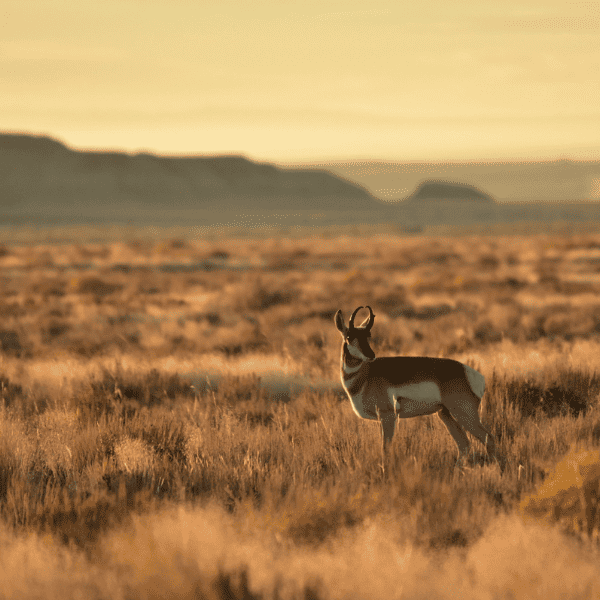
Partnerships on the Range Continue to Accelerate Conservation
Our team of dedicated and enthusiastic range conservationists, wildlife biologists, and natural resource specialists make a difference for landowners and for wildlife across the West. Read the impressive tally of on-the-ground results from the SGI field team.
How do Lesser Prairie-Chickens Survive the Winter?
February 2, 2016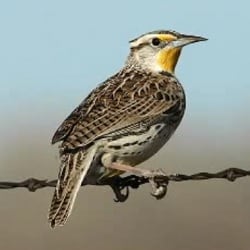
Webinar: Birds in the Sagebrush Ecosystem
February 17, 2016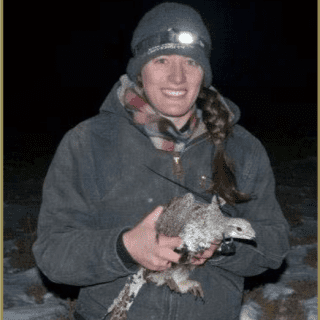
Marcella Fremgan holds a Gunnison sage-grouse hen in Colorado. Courtesy of Boise State University

(Photo right: Marcella Fremgan works with SGI in Colorado. Credit Boise State University.)
Read the newest SGI results: Quarterly Report, October-December 2015
The Sage Grouse Initiative strives to be a working model for science-based, landscape-scale habitat conservation. Led by the USDA’s Natural Resource Conservation Service, SGI represents a landmark step forward in leveraging broad partnerships with nonprofits, federal agencies, and state and local organizations to address many of the bottlenecks that have prevented Farm Bill conservation programs from realizing their true potential for wildlife habitat conservation on private land in the West.
SGI’s partnership positions include dozens of field staff located in 11 states, who together comprise our Strategic Watershed Action Team. This team continued to expand and accelerate on-the-ground conservation results last quarter, with support from NRCS staff and funding partners. The Intermountain West Joint Venture takes the lead in coordinating SGI’s Strategic Watershed Action Team, and leverages funds to ensure this is a lasting conservation partnership with tangible results. The IWJV also produces this quarterly report.

Conifer Science Summit participants: (back row, left to right) Jason Reinhardt (University of Minnesota); Michael
Falkowski (Colorado State University); Aaron Holmes (Northwest Wildlife Science); Brady Allred
(University of Montana); Dave Naugle (University of Montana); Andrew Olsen (Oregon State
University); Jeremy Maestas (NRCS); (front row, left to right) Patrick Donnelly (IWJV); Christian
Hagen (Oregon State University); Jason Tack (University of Montana); Holly Copeland (The Nature
Conservancy of Wyoming). Not pictured: Sandra Brewer (Nevada BLM)
The team’s dedicated and enthusiastic range conservationists, wildlife biologists, and natural resource specialists make a difference for landowners and sage grouse, and also spread the shared vision of achieving wildlife conservation through sustainable ranching. Partner staff on SGI’s Action Team have helped plan or implement projects that have tallied up to produce these results:
>> 2,271,146 acres of rangeland improvement to increase sage grouse hiding cover during nesting season. Additional grass cover is expected to increase sage grouse populations by eight to ten percent.
>> 287,167 acres of conifer removal in key nesting, brood-rearing, and wintering habitats. Removing encroaching conifers from sagebrush rangelands eliminates tall structures in otherwise suitable habitat. As birds re-colonize former habitats, increased bird abundance is anticipated.
>> 193 miles of “high-risk” fence near leks marked or removed. Marking fences is expected to reduce sage grouse fence collisions by 83%.
In addition to the field results, SGI’s latest report features these highlights from the last quarter:
- In October, researchers representing 11 different entities gathered in northwest Utah at the “Conifer Science Summit” to assess the status of conifer-associated research, improve knowledge transfer to practitioners, and develop a strategic path for next generation conifer science.
- This quarter’s featured SWAT member, Eduardo Contreras, is an SGI Range and Wildlife Conservationist with Pheasants Forever. Eduardo works with landowners in Elmore and Owyhee Counties in southwest Idaho on juniper removal projects.
- USDA Secretary Tom Vilsack announced on December 10 that USDA will invest $40M in FY 2016 to help ranchers and other partners restore and protect sagebrush habitat for Greater Sagegrouse in 11 western states, part of USDA’s four-year, $211M SGI 2.0 Investment Strategy through the Working Lands for Wildlife partnership.
- A new exhibit called “Sage Grouse: Icon of the Sagebrush Sea” opened in October at the High Desert Museum in Bend, Oregon, co-sponsored by SGI. The exhibit explores the birds’ role in the sagebrush ecosystem, as well as its important cultural value to Native Americans, hunters, and birdwatchers.
Read more results in this full report.
View SGI’s past quarterly reports:

